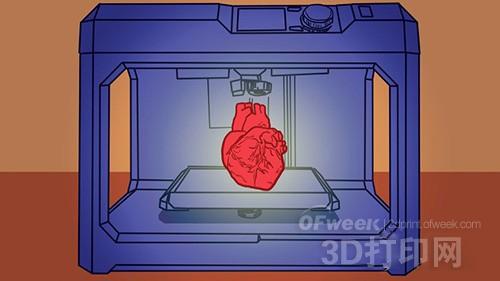By the end of 2015, the US Food and Drug Administration (FDA) had approved the sale of more than 85 3D printed medical devices , such as artificial limbs, surgical tools, and artificial substitutes for damaged bone. Spritam is a drug used to treat epilepsy and has become the first FDA-approved 3D printing drug. These uses of 3D printers are innovative, but they primarily provide another approach to medical technology. The continuous development of biological 3D printing technology will become a new force to change the existing medical field. Just like a regular printer can reproduce digital photos and documents, a 3D printer can build anything from computer-aided design (CAD) file design. According to the instructions from the CAD file, when the 3D printer deposits material (usually plastic, metal, or living cells in the case of bioprinting) onto a continuous two-dimensional layer, the 3D printer moves up and the inkjet device will The material falls on top of the 3D printed object. These machines typically employ a technique called inkjet printing. In order for living cells to withstand this process, engineers need to address the high pressures and temperatures inside the inkjet. Thomas Boland, William Crisp Wilson and Tao Xu received their 2006 patents, and they succeeded in extending the versatility of 3D printers to the living structure. Their modification to inkjet printing allowed 25% to 85% of the printed cells to survive after 24 hours of incubation. Bioprinted cells can now survive for weeks, and engineers are continuing to work to further extend cell life. Thousands of Canadians need organ donors This technology has potential life-saving applications. According to the Canadian government, more than 4,500 Canadians awaited matching with organ donors in 2014. In the same year, 278 Canadians on the waiting list who needed organ transplants passed away. If bioprinters evolve to the point where they can make implantable organs, the health care system can eliminate the gap between the number of organ donors and the number of people dependent on organ donation. Research by biotechnology company Organovo helps to change the situation and save more lives. Considering that one-third of the 278 Canadians have died from a lack of transplantable kidneys, Organovo's ability to bioprint functional human kidney tissue has given hope for future organ transplants. In addition to ensuring a renewable source of living organs, the most advanced use of bioprinting will be an additional challenge associated with organ transplantation. Accepting organs from human donors requires patients to indefinitely suppress the motility of their immune system to reject foreign tissues. Therefore, beneficiaries of organ donation must weaken their natural protection against disease during the rest of their lives. Before starting the bioprinting process, the patient's doctor will take samples of healthy cells in the laboratory for reproduction. The bioprinter will then construct a replacement tissue with the patient's cells, allowing the immune system to identify the new tissue as safe. Instead of waiting to receive organs from people with compatible DNA, doctors using bioprinters can tell their patients exactly when new organs are ready for surgery. In both ways, bioprinting will eliminate the uncertainty of when a healthy organ is available and whether the patient's body will accept the tissue of the donor. In addition to automated organ donation, bioprinting may eventually provide an alternative treatment. At the Wake Forest Institute for Regenerative Medicine, a campus that trains medical students, researchers are developing bioprinted skin to treat victims of burns. Severe burns usually require the use of some of the victim's healthy skin to cover the damaged area. As explained by the Burn Recovery Center, the use of skin from another person is only sufficient for one to three weeks before the doctor who makes an aggressive response to the immune system removes the donated skin. Therefore, the only permanent treatment requires the doctor to make the same second wound as the first, and the Wake Forest Institute reports that its bioprinter can make enough replacement skin to cover the ten times of healthy tissue that is usually needed. burn. Antitumor And Chemotherapy Antiemetic Antitumor And Chemotherapy Antiemetic,Tropisetron Hydrochloride Tablets,Tablets Of Tropisetron Hydrochloride,Tablets For Antitumor And Antiemetic Shandong Qidu Pharmaceutical Co., Ltd. , https://www.qdyypharma.com